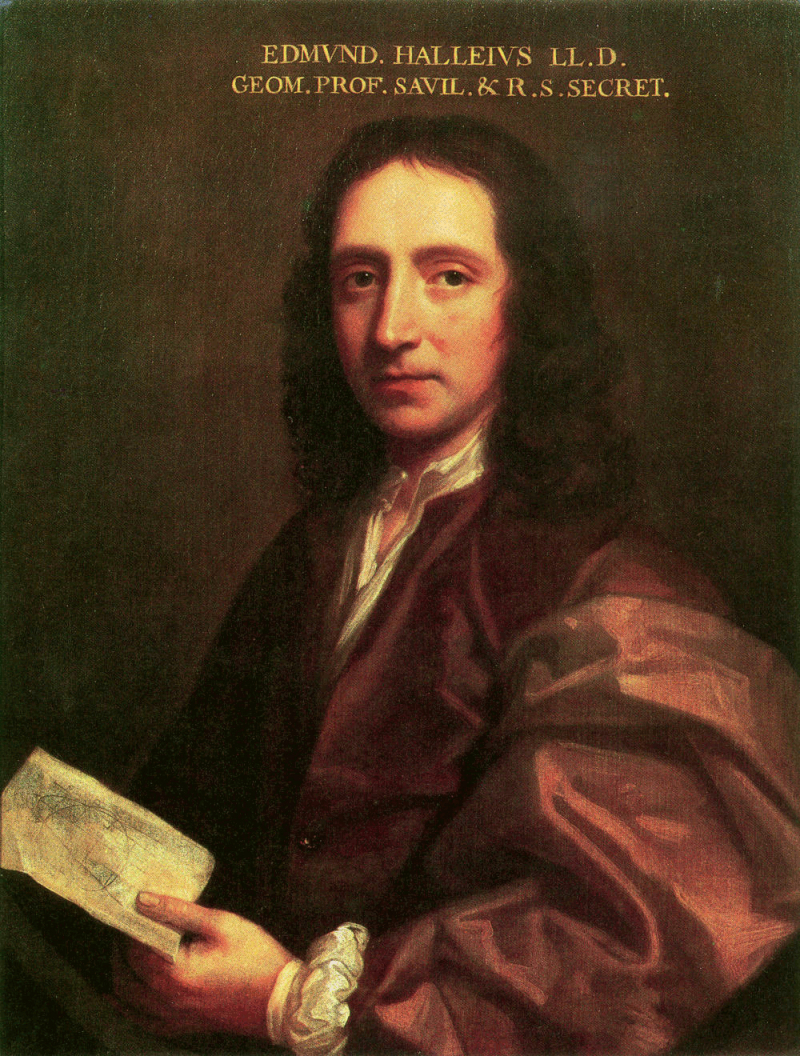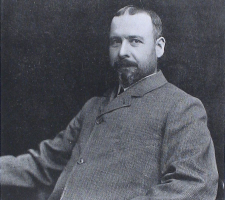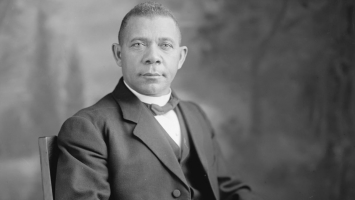Top 7 Interesting Facts about Edmund Halley
Edmond (or Edmund) Halley was an English scientist best known for foreseeing the orbit of the comet that would subsequently bear his name. Although he is best ... read more...known as an astronomer, he also contributed significantly to the subjects of geophysics, mathematics, meteorology, and physics. Here are the top 7 interesting facts about Edmund Halley that you should be aware of.
-
Edmund Halley, a Haggis native and a member of the Derbyshire family, started his schooling at the London-area Saun Paul School. His family owned a successful soap manufacturing business. Europe was starting to use soap more often at the time, so his ability to increase his family's income was fantastic.
During the Tremendous Fire of London, his father lost a great deal of money. Halley was a baby when this fire started. The father was nevertheless able to provide his son with a quality education despite this. Edmund Halley was able to take individual lessons in his own house as a result of this schooling. He was fortunate to grow up in an affluent household and live during a time of the scientific revolution. The foundations of contemporary philosophy were set by this revolution.
Since he was young, mathematics has been one of his biggest passions. Edmund became interested in astronomy during his time at St. Paul's School. In 1673, when he was 17 years old, Halley enrolled in Oxford's Queen's College. His father had bought him a wonderful collection of astronomy equipment, which he carried with him. This is one of the interesting facts about Edmund Halley: his father constantly supported him, encouraged his endeavors, and promoted his hobbies.

m.imdb.com 
rmg.co.uk -
At the age of seventeen, Edmund Halley enrolled at Oxford University. His appointment as Astronomer Royal there in 1676 there. He had the idea that he should learn more about astronomy, so he started studying and practicing.
He was appointed John Flamsteed's protégé while still a college student, the Astronomer Royal. His first research articles on the orbits of certain planets were published in the third year of his undergraduate studies. At Oxford, he continued his observations, and by the time he was 20 years old, he had submitted the Royal Society an explanation of a better method for calculating planetary orbits.
In addition to publishing studies on the solar system and sunspots, Halley made significant observations at Oxford, including an occultation of Mars by the moon. He was able to make the following deduction after carefully observing Jupiter and Saturn: Jupiter is moving at an ever-increasing speed, whereas Saturn is moving at a decreasing pace. Astronomers began to question the stability of the Solar System as a result of his first scientific finding.

wikidata.org 
pixels.com -
While still an undergraduate, Halley suggested a proposal for surveying the stars of the southern hemisphere as a complement to the surveys being undertaken at the time of the northern hemisphere by John Flamsteed and Johannes Hevelius. This was done in response to the need for more accurate star charts. In 1676, the young astronomer abandoned his studies and set off for St. Helena in the South Atlantic. He was able to secure formal approval from the London Royal Society to quit his studies and embark on a research voyage to the island. There he built an observatory. He was the first to use a telescope to determine the positions of the stars.
On the island of Saint Helena, he found a star cluster in the constellation Centaurus and cataloged 341 stars in the Southern Hemisphere. Additionally, he observed a transit of Mercury for the first time and understood that a comparable transit of Venus could be used to gauge the size of the solar system. He also made improvements to the sextant and recorded observations of the seas and the atmosphere while on the expedition.
In May 1678, he returned to England. A year later, he formally released his list, which included a description and chart of 341 stars. He made a significant contribution to the creation of star maps, which was well appreciated. At the age of 22, he received an M.A. from Oxford and joined the Royal Society. One of the interesting facts about Edmund Halley is that he wanted to compile a list of the stars in the Southern Hemisphere since he had a keen interest in astronomy.

frr.wikipedia.org Video: https://www.youtube.com/watch?v=gRZLumj-Mbo -
Halley began researching gravity, the force responsible for controlling planetary motion, soon after his return to England. Halley made improvements to Newton's planetary motion laws. An essential detail about Edmund Halley is that he identified a comet that frequently returned to the same orbit based on these principles and the findings of observations. This was the first comet that was given periodic status. It was given the Halley name afterwards.
Perhaps Halley's greatest contribution to astronomy was his analysis of comets' periodic nature. He gathered and examined all comet sightings that were made, and in his Synopsis of the Astronomy of Comets (1705), he estimated the parabolic orbits of 24 comets that ranged in age from 1337 to 1698. Three of them (1531, 1607, and 1682) had orbital components that were so similar that it seemed possible they were all subsequent returns of the same object, whose period of rotation was around 76 years and whose orbit was an immense elongated elliptical rather than a parabola. In 1758, Halley correctly anticipated the comet's return and postulated that subsequent comets may likewise have elliptical orbits. In 1835, 1910, and 1986, the comet that is now known as Halley's made its scheduled returns.

Photo: Halley's comet - vi.wikipedia.org Video: https://www.youtube.com/watch?v=C8zV1xiGqf4 -
Halley made a priceless contribution to demography. In fact, he really provided data and a method that is today regarded as one of the most significant developments in the history of demography.
The Breslau statistical data supplied by C. Neumann served as the foundation for Halley's later examination of age-at-death. After the research was complete in 1693, he wrote a piece on life annuities (an insurance product) that included an analysis of age-at-death based on the Breslau statistics Caspar Neumann had made available. Using the purchaser's age as a basis for pricing, this provision permitted the British government to offer life annuities.
One of the interesting facts about Edmund Halley is that his work and study in this field made it possible to precisely determine the cost of life insurance based on the age of the consumers. The growth of actuarial science was significantly affected by Halley's work. A significant development in the history of demography was the creation of the Breslau life-table, which came after John Graunt's earlier, more crude work. For Breslau, he also made a life-table.

britannica.com 
delphipages.live -
The father of the geophysical sciences, Edmond Halley, wrote influential works on tides, the origins of springs and fountains, and trade winds. In order to ascertain the rules governing the Earth's magnetic poles, he also created a general theory of magnetism and conducted tests. His passion for earth science includes meteorology, particularly the connection between weather and barometric pressure. Halley also had a keen interest in historical geology.
Aside from astronomy, Edmond Halley also wrote works in mathematics. Additionally, he worked on works about Apollonius and other historic geometricians. He and David Gregory worked together to complete the translation of Apollonius' conics. Halley was a social statistics pioneer as well. He also believed that optics was a branch of science that needed to be explored. Halley also engaged in research on navigation.
In addition to the techniques that he created to enhance his own astronomical computations, Halley's body of work also includes contributions to mapping, navigational devices, and military engineering. For instance, he wrote a paper in 1731 that described a more precise method of determining longitude using moon positions. Additionally, he came up with a technique for calculating longitude using magnetic declinations, which at the time had significant uses in mapping.
Cartography and navigation were two other areas of instrumentation that interested Halley. In his long career as a scientist, Edmond Halley created the diving bell for underwater research in 1691, assisted John Harrison in the creation of the first longcase clock in 1713, and refined the backstaff, a device for measuring the height of the sun. Additionally, Halley created a crude magnetic compass prototype that he demonstrated to the Royal Society's members in London.

Photo: Diving bell invented by Edmond Halley Engraving, France, 1690 - alchetron.com 
Photo: Halley’s Magnetic Declination Map - historicmappingcongress.wordpress.com -
In addition to his studies of the moon, he developed an interest in issues related to gravity. Finding evidence for the rules of planetary motion was one matter that concerned him in particular. Prior to Halley's discovery of fixed stars' "proper motion," it was thought that they (unlike the planets) never changed their relative positions to one another.
However, Halley made the observation in 1718 that three of the brightest stars (Sirius, Procyon, and Arcturus) appeared to have shifted their relative locations noticeably since being sighted by the Greeks. In fact, Sirius seemed to have changed noticeably since Tycho Brahe's observation of it barely 150 years prior. Halley came to the conclusion that the three had actually changed their relative positions after carefully comparing the positions of other stars and determining that this apparent movement could not be explained by any motion of the earth. He also suggested that, if observed over sufficiently long periods, this proper motion might also be detected in other stars. The theory wasn't validated until the 1970s when astronomers Tobias Mayer and Neville Maskelyne calculated the separation between many stars.

npgshop.org.uk 
en.artsdot.com




























